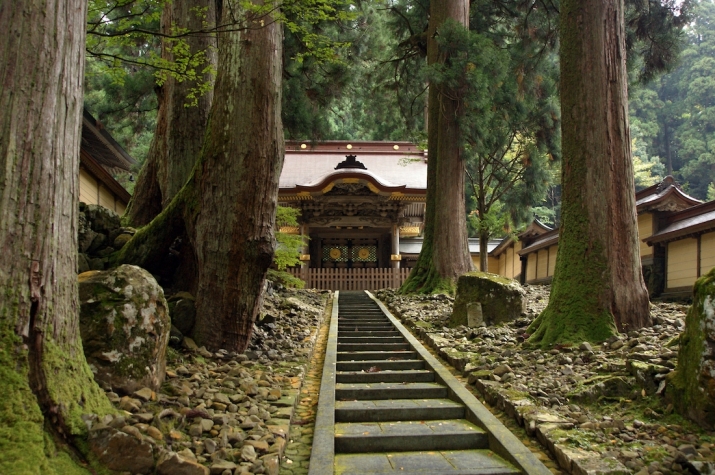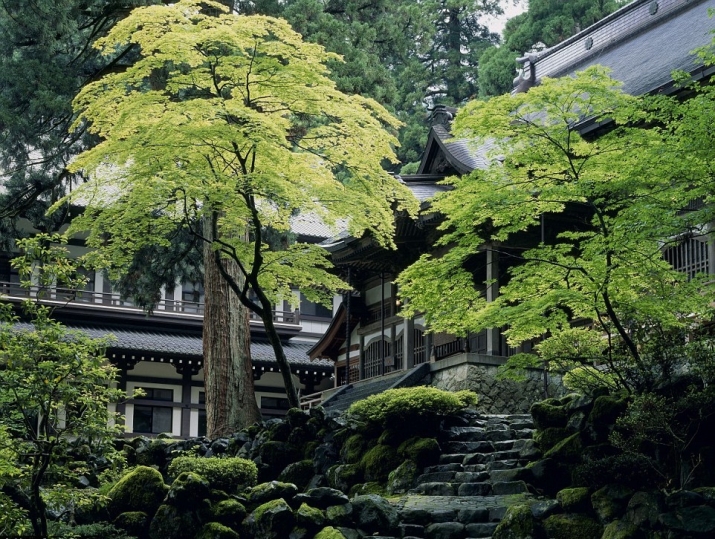NEWS
Buddhist Temples in Japan Hope to Tap Foreign Tourist Boom
 The 13th century Eihei-ji has teamed up with a property developer make the temple more attractive to foreign tourists. From wikipedia.org
The 13th century Eihei-ji has teamed up with a property developer make the temple more attractive to foreign tourists. From wikipedia.orgWith 27,000 of the Japan’s 77,000 Buddhist temples expected to close over the next 25 years due to shrinking rural communities and a loss of faith in organized religion among the country’s declining population,* monasteries in Japan are now looking to the booming tourism market to turn around their flagging fortunes.
Boosted by a weak yen and government-led initiatives, tourism to Japan has reached record levels. Annual visitors from overseas, led China, South Korea, and Taiwan, look set to reach prime minister Shinzo Abe’s goal of 20 million well before his target of 2020, when Tokyo will host the Olympic Games. Japan's temples—which have sought to court domestic Buddhists through various innovative means, such as high-tech funerary services, monastic bar staff, and incorporating pop culture and hip-hop beats into their teachings**—hope to bolster their popularity by tapping into this growth sector.
Nestled deep within a verdant old-growth forest in the western coastal prefecture of Fujui, the 13th century Sōtō Zen temple Eihei-ji is seeking funds to support its monastic community of more than 200 monks and nuns. Visitor numbers here have fallen by nearly two-thirds from the peak in the late 1980s, when groups tours organized by Japanese companies and neighborhood associations were at the height of their popularity, to less than half a million a year.
“Eihei-ji is a monastery that has been isolated from the rest of the world,” said deputy temple administrator Shodo Kobayashi. “But we cannot be divorced from our community forever. We need to respond to the needs of local governments to increase tourists.” (Reuters)
 Visitors to Eihei-ji have dropped by more than two-thirds since the 1980s to less than half a million per year. From dailymail.co.uk
Visitors to Eihei-ji have dropped by more than two-thirds since the 1980s to less than half a million per year. From dailymail.co.ukEihei-ji has joined hands with the local authorities and Mori Building Co, the developer behind some of Tokyo’s most famous commercial properties, to draw up a new strategy to attract international visitors. The plan, due to be completed by 2020, includes the construction of a ¥1.3 billion (US$11 million), two-storey hotel for 80 guests in the nearby town with a dedicated path leading directly to the venerable temple.
The local authorities hope to double the number of visitors to the temple by 2025 by drawing on the surge in foreign tourists to the historic city of Kanazawa some 50 miles away that has resulted from a new bullet train line that whisks visitors in from Tokyo in just two-and-a-half hours. “With a place to stay the night, tourists will spend more time and money," said Eiheiji town official Shouji Kawakami. (Reuters)
In the northeastern prefecture of Iwate, meanwhile, Chūson-ji, the head temple of the Tendai school of Mahayana Buddhism and a UNESCO World Heritage Site, is already reaping some rewards from promotions aimed at attracting visitors, particularly from Taiwan and Thailand, where Buddhism is the dominant religion.
“We have been making efforts to attract tourists but we haven't done enough. How hard we try to attract them would be a key for the future,” said senior monk Kaisyun Chiba, adding that the central government’s push to encourage visitors to Japan was also helping. (Reuters)
However, Japan Research Institute chief senior economist Kosuke Motani sounded a sober note of caution to temper the ambitions of the temples: “In order for them to attract foreign tourists, they need to have something very unique. It is very challenging for places that were deserted by Japanese people to attract foreign tourists.” (Reuters)
*Almost One-Third of Japan’s Buddhist Temples Expected to Close by 2040
** Monks in Japan Turn to Beats to Make Buddhism More Palatable
Japanese Buddhist Temples Adapt to Changing Needs
See more
In new habit, Japan's Buddhist temples seek slice of foreign tourism boom (Reuters)
How Japan's ancient temples are cashing in on the tourist trade with swanky new hotels (and the occasional centuries-old ritual) (Mail Online)
Survey Reveals Over 12,000 Temples in Japan Lack Resident Monks (Buddhistdoor Global)














